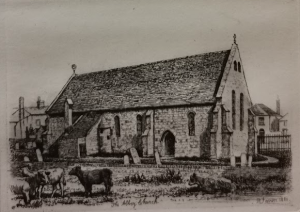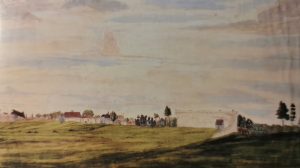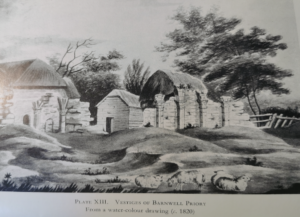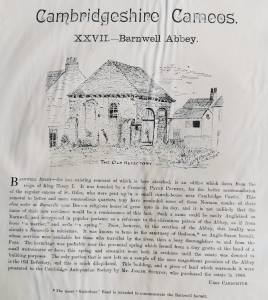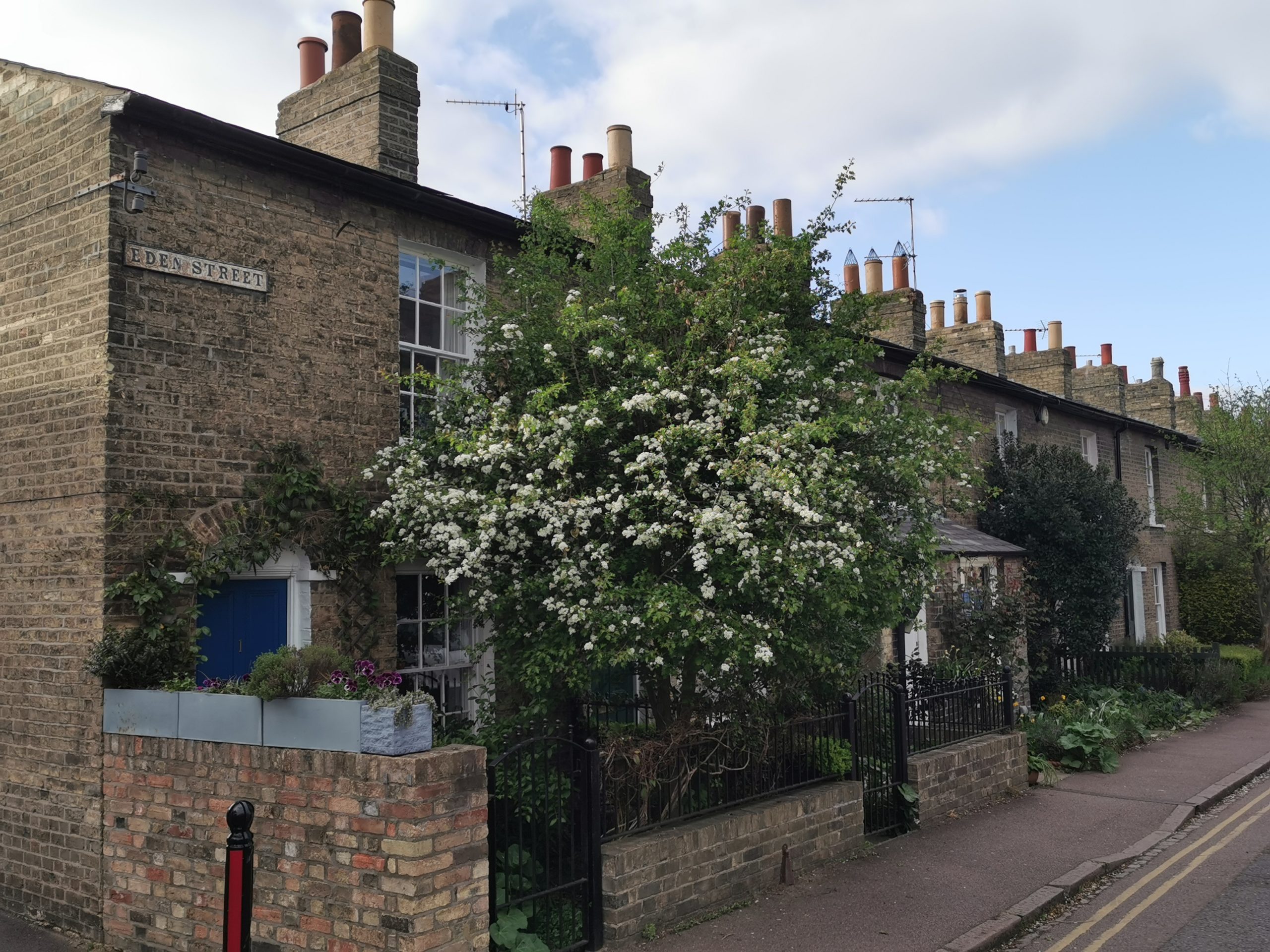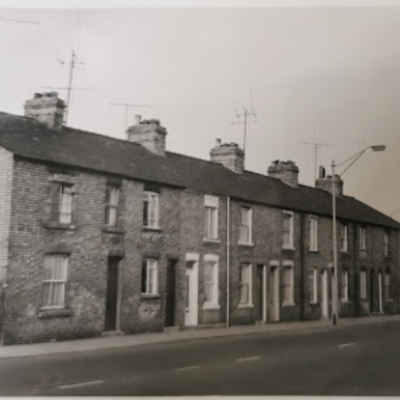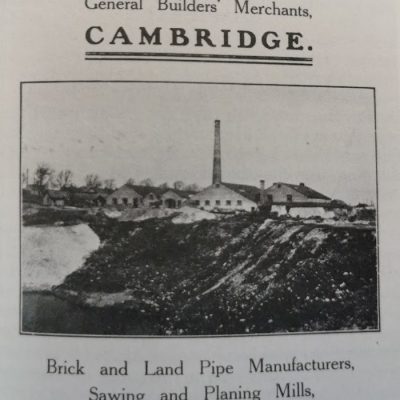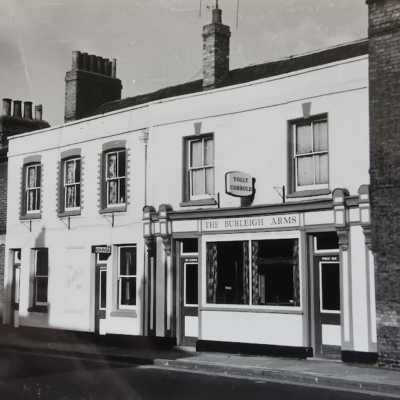Search by topic
- archaeology
- Building of Local Interest
- charity
- church
- crime
- dressmaker
- fire
- Great Eastern Railway
- Listed building
- Mapping Relief
- medieval
- oral history
- poverty
- Public House
- Rattee & Kett
- Religious House
- Roman
- scholar
- school
- Then and Now
- tudor
- women
- work
- world war one
- world war two
Search by text
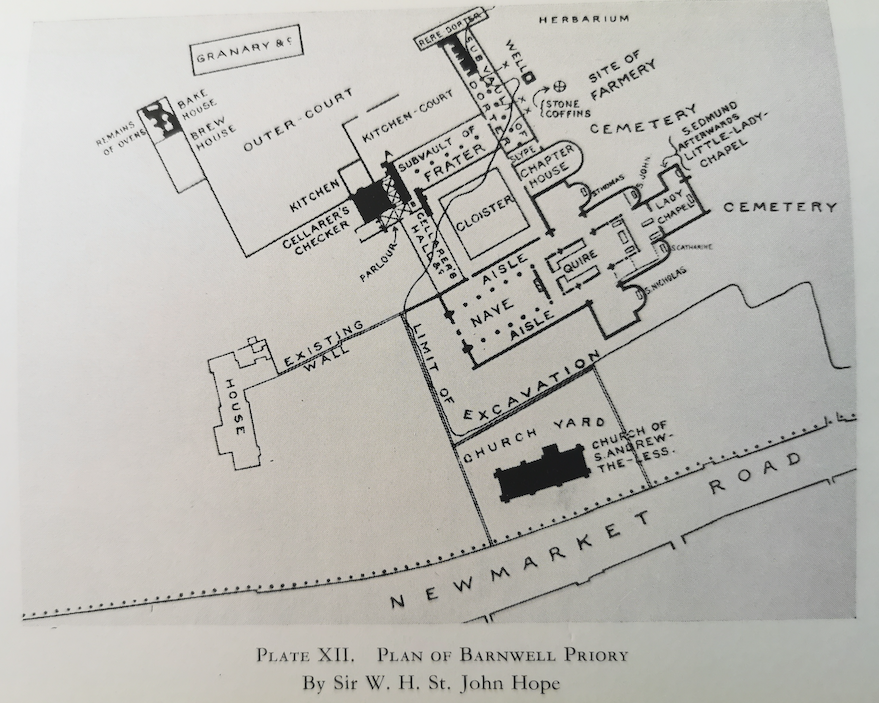 Plan of Barnwell Priory by W H Hope
Plan of Barnwell Priory by W H HopeSt Andrew the Less / Barnwell Priory
History of St Andrew the Less
This is a 13th century building, once part of the Barnwell Augustinian Priory complex. The Priory church would have covered the plots of the houses on the south side of Beche Road; the other priory buildings would have stretched along the line of Priory Road.
Further information can be found on the English Heritage website:
https://historicengland.org.uk/advice/heritage-at-risk/search-register/list-entry/22749
See also ‘The Inheritors of Barnwell Priory’ by P V Danckwerts in Proceedings of the Cambridge Antiquarian Society Volume LXX 1980.
According to A Taylor, (Cambridge – The Hidden History), it was the first and largest religious house in Cambridge but never became involved in university life. It was one of the earliest Augustinian Houses and was intended to support six priests to serve neighbouring churches. The first foundation had been by sheriff Picot in 1092 near to the castle, probably next to St Giles’ church. This benefaction was allegedly in return for the recovery of his wife from illness.
Picot was involved in a plot against Henry I and he forfeit his estates. These were given to Pain Peverel, a Norman knight who had been on Crusade and had brought back sacred relics from Antioch. He got permission from the king to refound the priory on more spacious grounds within the royal manor of Chesterton.
The new site had a holy well with pre-Christian origins that had been used for semi-pagan festivities in Saxon times. A hermit had also lived there in ‘a tiny wooden oratory.’ In due course the priory was granted the manor of Chesterton by King John, for a price. A new church was dedicated in 1170.
In there were 17 monks at the priory. When royalty visited Cambridge they generally chose to stay at the priory. A boys school was set up there supported by charity; five poor men were also supported and scraps used to feed three other poor people every day, plus general gifts of peas and beans to the townspeople in Lent.
Florence Ada Keynes records the following visits to the Priory:
1200 King John
1236 Lord Hugh Bishop of Ely held full synod
1258 Henry III
1293 Edward I stayed in the castle and his chancellor at the priory. The Chancellor had charge of the King’s treasure chest of £1,000.
1295 Two papal legates visited
1325 Edward II spent several days at the priory
1326 Queen Isabella
1388 Richard II stayed an summoned parliament, ‘The Cambridge Parliament,’ to meet him there
1534 Prior Nicholas Smith resigned and was awarded a pension of £20. John Badcock was appointed Prior to oversee the Dissolution.
When the house was dissolved in 1538 it was too far out of the city to be considered being reestablished as a college and the estate was no longer a going concern.
1550 Sir Anthony Browne was granted the priory and its lands.
1551 John Badcock, the last prior, had taken over the lease but died in this year.
1553 Control of the lands passed through various hands until Lord Clinton and Saye sold them in this year for 800 marks to Thomas Wendy of Haslingfield.
In 1578 when the Chapel of Corpus Christi College was being built, it is recorded that 182 loads of stone were removed from the dismantled monastery to the college.
Thomas Panton, Chief Groom, or Equerry, to George II, and master of the King’s “running horses” bought c. 1769 land all round Fen Ditton – he lived in Ditton Hall. His purchases included Sturbridge Fair Ground, the Leper Chapel, the Barnwell Priory site and probably other land.
His son, Thomas as well, left no heirs, and the estate passed to Lady Gwydir, his niece. In 1820 the estate passed to her son who sold it in lots to various persons. Fen Ditton and Barnwell was bought by Dr Haviland, a Cambridge doctor.
1813 – 1886
The priory and other land nearby was acquired by Rev. Dr James Geldart. He described himself as ‘Lord of the Manor’ at Barnwell but it does not seem that there was ever a manor in a legal sense. He leased the Abbey House to George Pryme who became the first professor of Political Economy in the University. He lived in the house until 1847. From this year the house seems to have been divided into three tenements. Cambridge street directories suggest that one middle-class family occupied the ‘grand’ 16th cent. rooms and two artisan families the rest.
The Barnwell property changed hands several times. The Abbey House found tenants; the rest was neglected. In 1879 the estate was bought by Joseph Sturton who made roads and sold most of the land in small plots. Enough land was enclosed to for a garden for the Abbey House.
In 1884 the tenant of Abbey House was Rev. H R B Streeten (Secretary to the Missions to Seamen) with two sub-tenants. In 1899 Streeten sold the house to Thomas Askham. Askham had been since 1874 landlord of the “Woodman’s Arms”, almost next door to the “Bird in Hand”. But Askham did not move into the house.
However, his son, Arthur Askham, moved into the house about 1922, and lived mainly in the part known as No.2. He owned the Hippodrome in Auckland Road. He sold the house in 1945 for £3,675 to Lord Fairhaven of Anglesey Abbey.
Lord Fairhaven made over the Abbey House in 1946 to the people of Cambridge in the form of the Folk Museum. The Museum never moved into the house however and the house remained as three residences until 1964 when Professor Danckwerts moved in with his family to nos 1 & 2. In 1973 the Folk Museum presented the freehold of the house to the City Council and in 1977 the Danckwerts lease was extended to include the whole house.
Enid Porter’s article on Barnwell Priory:
Contribute
Do you have any information about the people or places in this article? If so, then please let us know using the Contact page or by emailing capturingcambridge@
License
This work is licensed under CC BY-NC-SA 4.0





